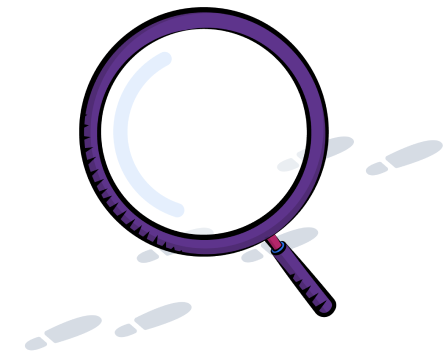Humans have lots of questions.
Humans are curious.
So are cats.
Here are some examples of technology people care about:
Websites.
Phones.
Spaceships.
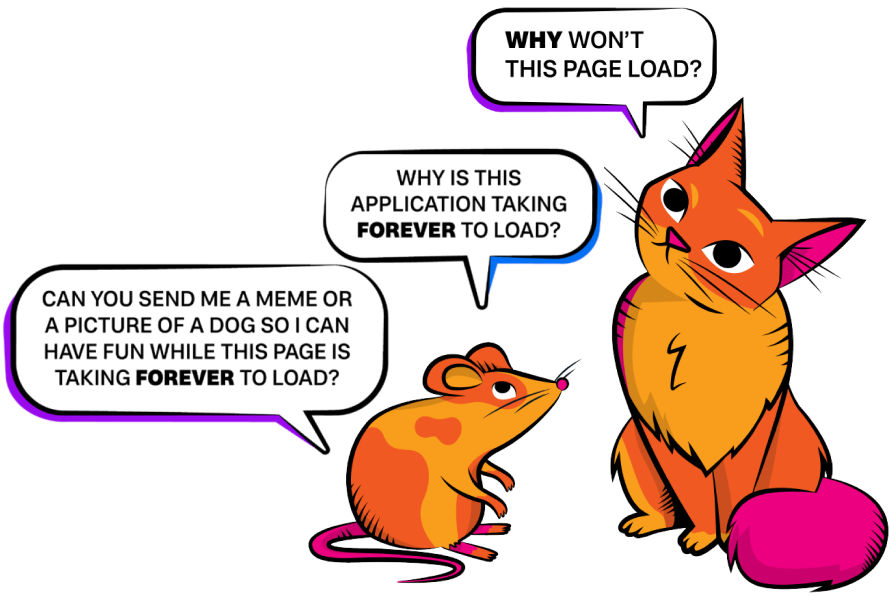
Here are some examples of things cats care about: Yarn. Mice. Naps.
We also have many questions about websites and applications.
Technology doesn’t always work. Tools break. Wires get crossed. Pages take forever to load — and by forever, we mean more than 3 seconds.
Sometimes, even a great meme doesn’t make us feel better.

Fortunately, Splunk engineers invented tools to help people with their technology when it stops working.
The steam engine.
The jacquard loom.
The telegraph.
Just kidding. Those things have been around since the industrial revolution.
Splunk is a data company. Here are some cool things from this century that Splunk can help with:
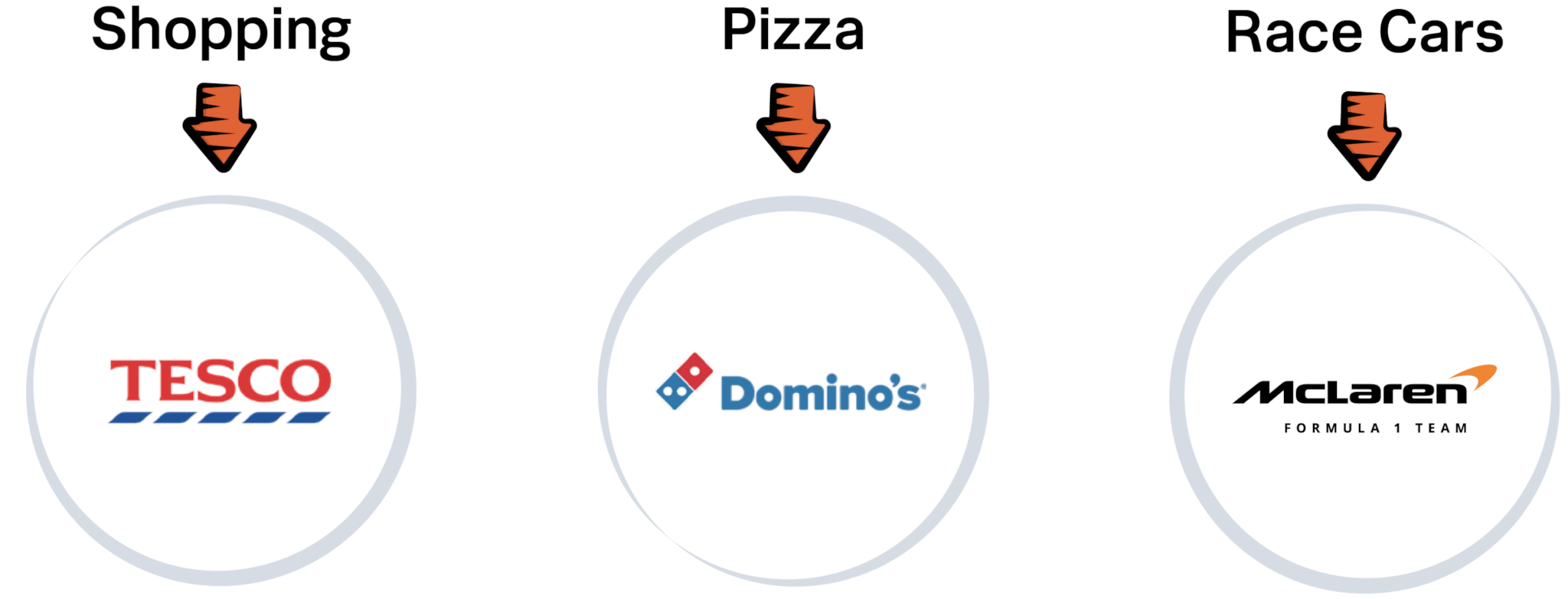
The biggest companies trust Splunk to help them when their technology isn’t working the way they want it to. There are way too many examples to list here, so we’ll stick to pizza, shopping and race cars.
You may be thinking, those companies aren’t that similar. Sort of like how cats aren’t that similar to people.
So, how does Splunk help so many different people from different countries who need to solve different problems?
They came up with a magical tool called
Splunk Observability Cloud.
It works like magic, but it’s not really magic.
Splunk Observability Cloud isn’t just one thing. It’s a complete set of tools to help you solve technology problems. It helps businesses see why their websites and applications aren’t working properly.
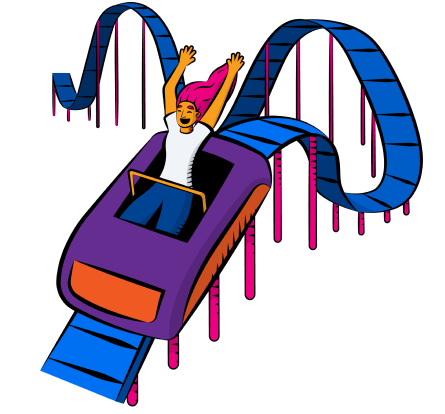
Every time you visit a website or app, you have an experience. It’s like going to your favorite amusement park. Sometimes you love playing skeeball, and other times, you wish you hadn’t chosen to ride the roller coaster after lunch.
This is known as user experience. Or, UX for short.
Now, back to observability. As modern apps become increasingly complex, the ability to keep track of all the pieces and how they work together in your head becomes more and more challenging.
Observability is a best practice that lets you answer any question about your entire business through the collection and analysis of data.
You can use observability to help understand the technology behind ordering pizza, racing cars and even riding roller coasters.
Can you use observability for e-commerce? Yes. What about the blockchain? Yes, absolutely.
Observability helps with just about anything.
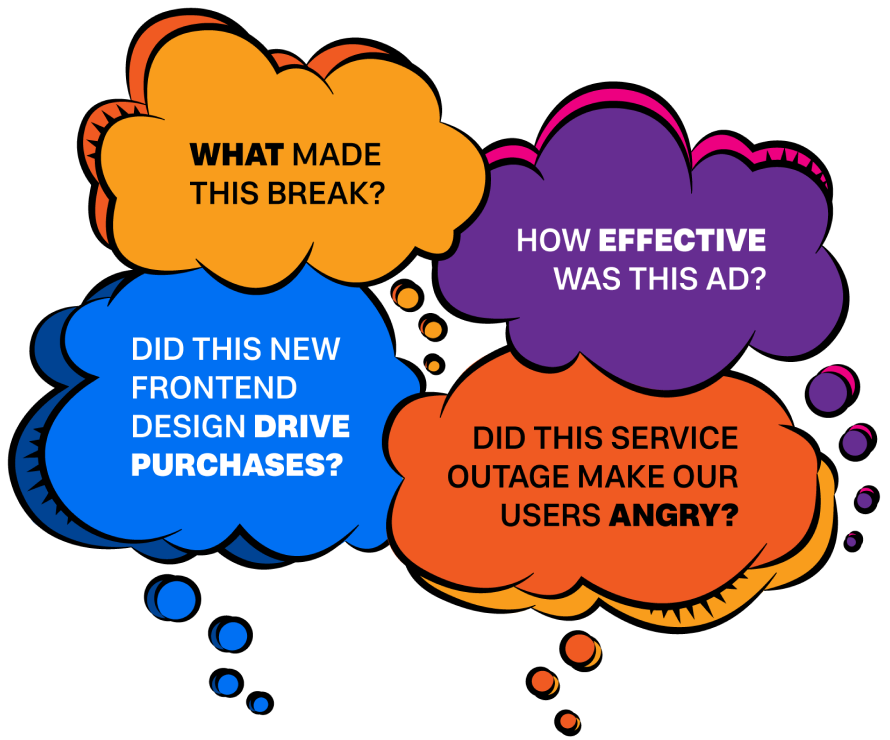
Observability also lets you ask how, or if, errors are impacting the user experience.
So, how exactly does it work?
There are several building blocks for observability, including:
With metrics, you can see what’s going on.
Is your pizza in the oven for too long?
Is your race car out of gas?
Is your roller coaster riding the rails at the right speed?
Or, is something else wrong? Something unknown. Something that you would never be able to guess on your own. An unknown unknown. It’s sort of like solving a brain teaser with a hint.

With traces, you can pinpoint exactly where and when a problem happened and in what part of the system.

It’s like solving a mystery. If you are a detective, this is the part where you learn that the butler stole the candlesticks in the library at 9:14 PM on a Tuesday.
Use traces to solve whatever mystery matters to you. And the best part? Observability never sleeps. You can get alerts sent straight to your phone, your watch or your spaceship.
With logs, you can see why the problem happened.
Artificial intelligence and machine learning can help sort through the logs to find the root cause of the problem.

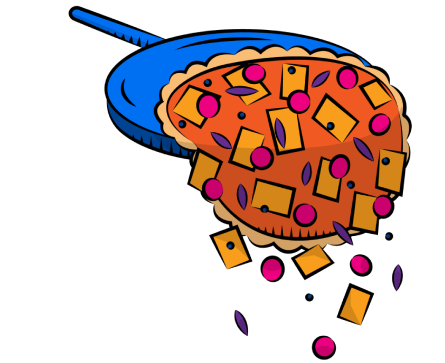
Maybe the pizza never made it to the oven because someone dropped it.
Or, your race car stopped halfway around the track because the mechanic forgot to put gas in it.
With events, you can add additional data
Events let you keep track of anything that happens, even if it's not part of the website or app. You can then see if other things happen at the same time as these events. An event could be someone buying something, or a taxi driver starting one place and ending somewhere else.
One more riddle: What’s the most scarce resource for humans?
It’s not oil.
It’s not gold.
It’s time.
Observability is our favorite invention because it gives you back time. You can solve major problems in seconds — not minutes! Our engineers are very excited about it. They want you to solve your issues in real time.
When you get to the root cause of a problem — using metrics, traces and logs — you have full visibility into whatever matters most.
We’re not here to tell you how to spend your time.
That’s why we created this handy guide on observability. That’s also why you’ll sometimes see observability shortened to O11y.
We tried to keep it short so that you can go back to building rocket ships, riding roller coasters or sending memes of your favorite animals.
Check out A Beginner’s Guide to Observability to learn how you can adapt an observability practice to solve just about anything. Or, download How To Explain Observability to a Child and share it next time a page takes too long to load.
